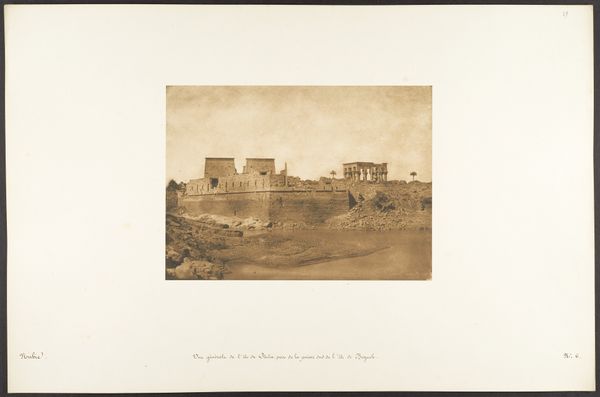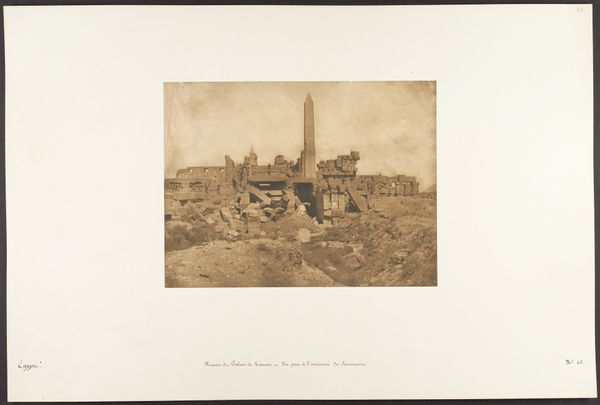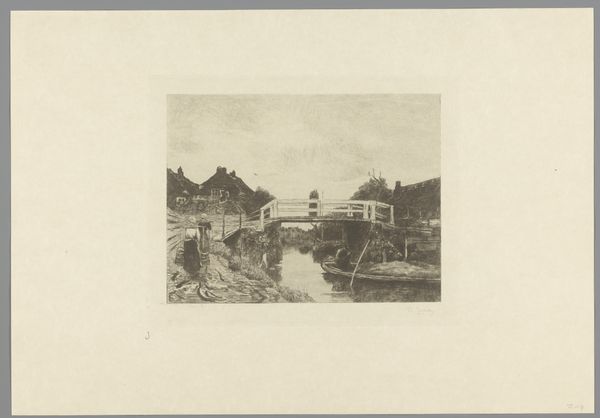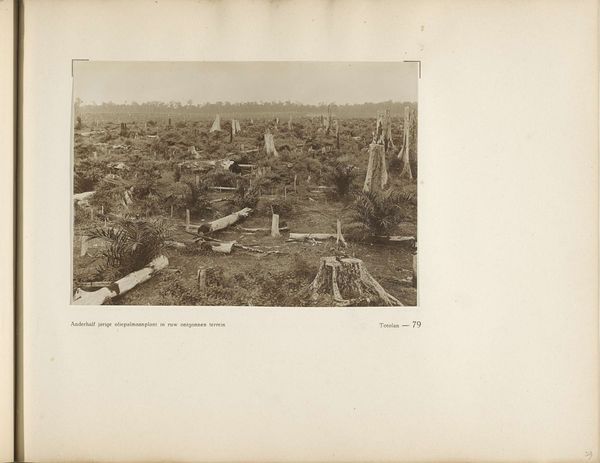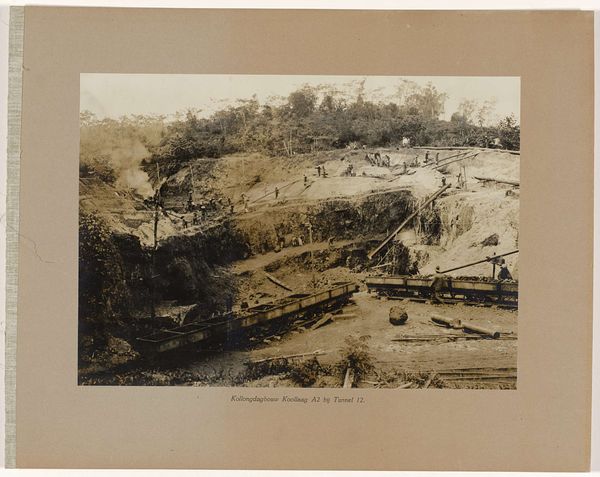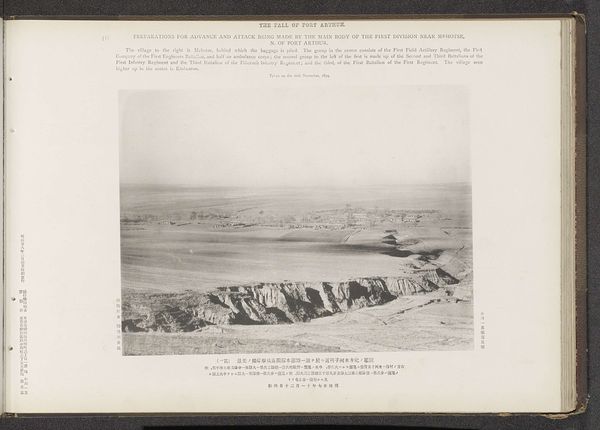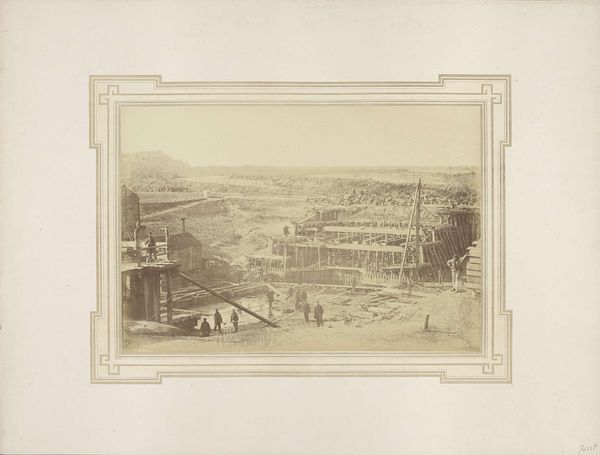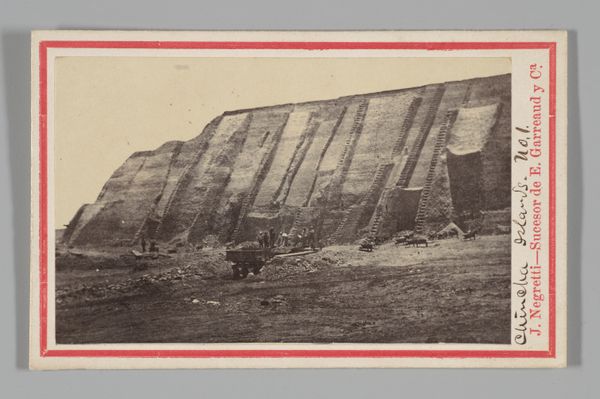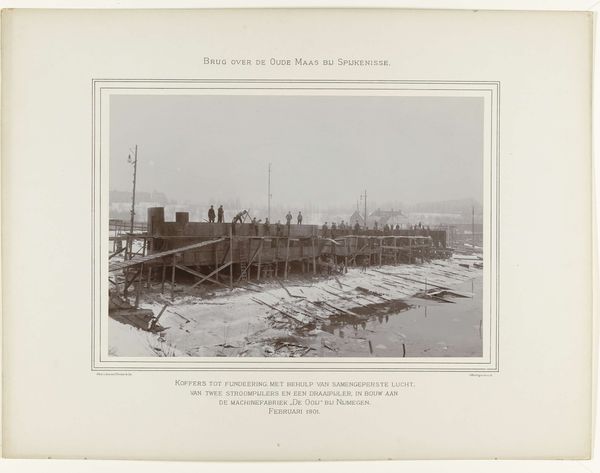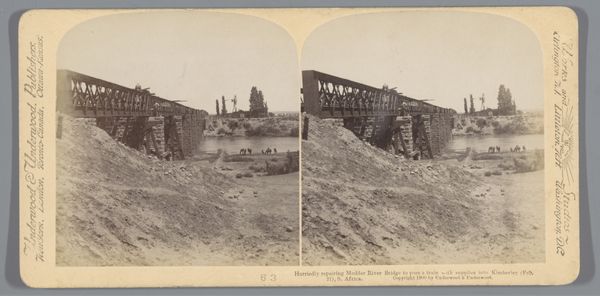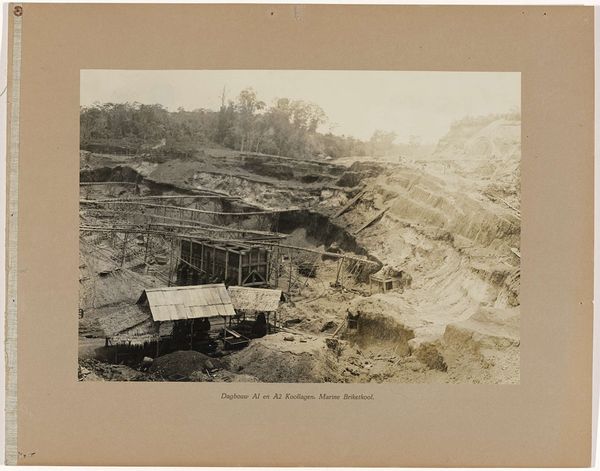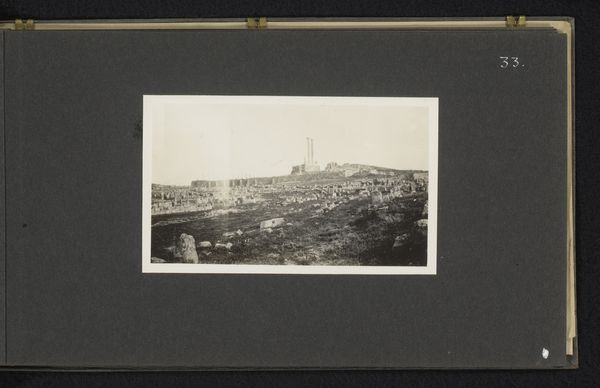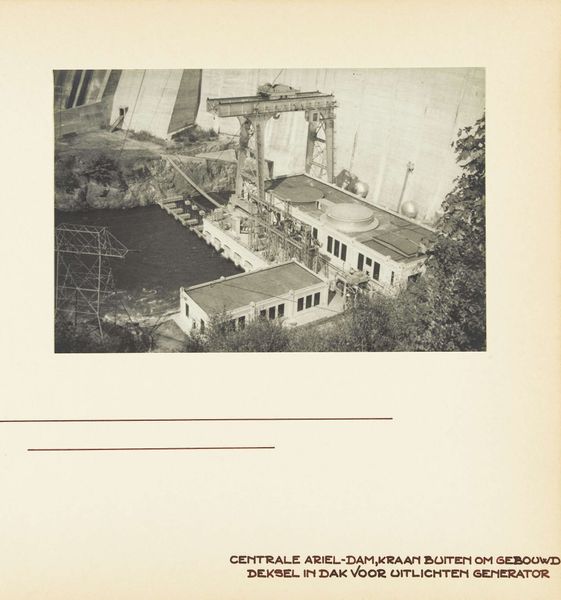
photography, gelatin-silver-print
#
landscape
#
photography
#
constructionism
#
gelatin-silver-print
#
cityscape
#
modernism
#
regionalism
#
realism
Dimensions: height 152 mm, width 226 mm, height 315 mm, width 330 mm
Copyright: Rijks Museum: Open Domain
Curator: What a stark and powerful image. This is a gelatin-silver print photograph from 1936 of the Bonneville Dam, during its construction near Portland, Oregon. The photographer, Wouter Cool, has captured a potent image. Editor: Absolutely. My first thought is scale. Look at the sheer magnitude of the dam against those smaller buildings, dwarfed by both the construction and the surrounding landscape. The photo emphasizes human labor against the backdrop of modernization. Curator: Precisely. Constructionism strongly influences the work; it’s evident in the almost brutal focus on process, machinery, and the transformation of raw materials into a functional behemoth. I see so many people in the distance, tiny against this scene of industry, yet fundamental to it. Editor: Yes, this photograph feels very much a product of the socio-political landscape of the time. It echoes the visual rhetoric often employed to depict public works projects, signifying progress and employment during the Depression era. I imagine the image originally accompanied news reports, shaping public opinion. Curator: No doubt. It is worth considering the symbolism inherent in such grand projects. This photograph celebrates human ingenuity in harnessing nature’s power. The composition is critical too: dark and light areas offer dynamic tension in service of showing the work. The tones emphasize texture, material, the raw aspect of things. Editor: From a historical perspective, the image invites us to contemplate who this “progress” was truly for, and the socio-economic context that underpinned the dam's construction. It highlights both the collective ambition of the nation at that time, but might obscure local cost. Curator: An important question, for sure, especially today as we contend with legacies of this scale. This print reminds us that we must continue to examine the implications of the making— the making of objects, societies, and stories about ourselves. Editor: It serves as a potent reminder to me: photographs offer us multiple points to begin new critical analyses. We might benefit by thinking beyond dominant narratives, remembering labor and loss always.
Comments
No comments
Be the first to comment and join the conversation on the ultimate creative platform.
